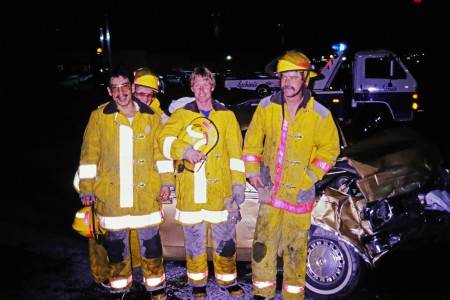SHOCK– CARDIOGENIC
ALL LEVELS
Designation of Condition
The patient will present with signs and symptoms of hypoperfusion usually accompanied by hypotension (BP <90 mmHg), shortness of breath often secondary to pulmonary edema (wet noisy respirations/crackles and, if severe, possibly pink frothy sputum), and other indicators of
hypoperfusion such as confusion, decreasing LOC and diaphoresis. These signs and symptoms are usually observed in the setting of AMI and require expeditious transport.
1. Oxygen at a flow rate sufficient to maintain SpO2 >94%.
2. Monitor ETCO2
3. Allow the patient to seek a position of comfort (fowlers recommended if possible).
4. Manage airway and provide BVM ventilatory assistance as necessary.
AEMT
1. Establish Vascular access IV/IO of Normal Saline or LR
2. Check lung sounds, If lung sounds are clear Administer a 5-10 ml/kg NS/LR bolus
PARAMEDIC
1. Monitor cardiac rhythm.
2. Monitor Vital Signs closely
3. Obtain 12 lead ECG.
4. If no improvement with fluid bolus, or if fluids are contraindicated because of pulmonary edema administer a vasopressor.
a. NOREPINEPHRINE (Levophed) drip @ 2-10 mcg/min IV infusion
i. Solution: 1 mg in 250 ml NS (4 mcg/ml); 40 ml/hr (~3 mcg/min); dose may be titrated to patient response
b. EPINEPHRINE drip @ 2-10 ug/min
i. EPINEPHRINE drip (1 mg in 250 ml of NS = 4 mcg/ml) and start at 2 mcg/min. Titrate drip up to 10 ug/min or until an acceptable perfusing heart rate and BP are achieved. A second IV line is desired, however, do not withhold medication if second IV is unobtainable.
c. EPI PUSH-DOSE Inject 1 mg. (1 ml) of 1:1,000 Epinephrine into 100 ml. bag NS.
i. Push 0.5-1 ml (5-10 mcg) q 1 min prn hypotension
ALL LEVELS
Designation of Condition
The patient will present with signs and symptoms of hypoperfusion usually accompanied by hypotension (BP <90 mmHg), shortness of breath often secondary to pulmonary edema (wet noisy respirations/crackles and, if severe, possibly pink frothy sputum), and other indicators of
hypoperfusion such as confusion, decreasing LOC and diaphoresis. These signs and symptoms are usually observed in the setting of AMI and require expeditious transport.
1. Oxygen at a flow rate sufficient to maintain SpO2 >94%.
2. Monitor ETCO2
3. Allow the patient to seek a position of comfort (fowlers recommended if possible).
4. Manage airway and provide BVM ventilatory assistance as necessary.
AEMT
1. Establish Vascular access IV/IO of Normal Saline or LR
2. Check lung sounds, If lung sounds are clear Administer a 5-10 ml/kg NS/LR bolus
PARAMEDIC
1. Monitor cardiac rhythm.
2. Monitor Vital Signs closely
3. Obtain 12 lead ECG.
4. If no improvement with fluid bolus, or if fluids are contraindicated because of pulmonary edema administer a vasopressor.
a. NOREPINEPHRINE (Levophed) drip @ 2-10 mcg/min IV infusion
i. Solution: 1 mg in 250 ml NS (4 mcg/ml); 40 ml/hr (~3 mcg/min); dose may be titrated to patient response
b. EPINEPHRINE drip @ 2-10 ug/min
i. EPINEPHRINE drip (1 mg in 250 ml of NS = 4 mcg/ml) and start at 2 mcg/min. Titrate drip up to 10 ug/min or until an acceptable perfusing heart rate and BP are achieved. A second IV line is desired, however, do not withhold medication if second IV is unobtainable.
c. EPI PUSH-DOSE Inject 1 mg. (1 ml) of 1:1,000 Epinephrine into 100 ml. bag NS.
i. Push 0.5-1 ml (5-10 mcg) q 1 min prn hypotension
